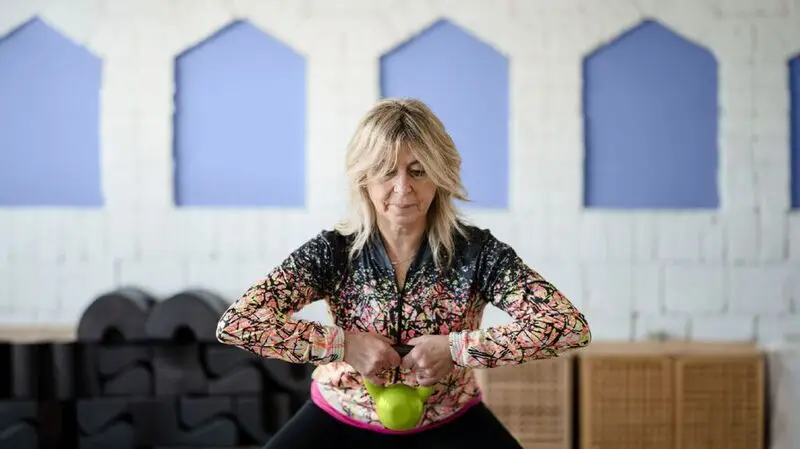
- DNA damage is one of the driving forces behind aging, including age-related damage to blood vessels.
- A new study in mice investigates links between DNA damage, exercise, and heart health.
- The scientists conclude that increased physical activity is linked to reduced DNA damage, including sections of DNA called telomeres, which are associated with biological aging.
A recent animal study from researchers in the Department of Internal Medicine at the University of Utah in Salt Lake City investigates the role of DNA damage in blood vessels and the aging cardiovascular system.
They found that increased exercise is linked to reduced DNA damage in the cells that line blood vessels. This may help explain how exercise, even later in life, can reduce the risk of developing atherosclerosis.
Led by Jisok Lim, PhD, a postdoctoral fellow at the University of Utah, the researchers will present their findings at the American Physiology Summit — the annual meeting of the American Physiological Society — in Long Beach, CA. The conference runs between April 4–7, 2024.
Our risk of heart disease and other cardiovascular problems increases as we age. Commonly, this is due to atherosclerosis — a build-up of fatty substances on the lining of blood vessels.
As these plaques grow, they narrow the vessels, increasing the risk of cardiovascular events like heart attacks or strokes.
Thankfully, exercise can significantly reduce the risk of atherosclerosis. Even exercise during older age can slow plaque buildup and improve cardiovascular outcomes.
However, understanding precisely how exercise benefits cardiovascular health has proven more challenging. The new study focuses on one of the likely mechanisms: DNA damage.
As we age, there is a slow loss of function across many aspects of our physiology. Part of this decline is due to damaged DNA.
DNA damage occurs for many reasons, and our
Experts consider DNA damage
Telomeres in cells that line blood vessels are particularly sensitive to damage by a force called “shear stress.”
“The higher the blood velocity and the smaller the arterial diameter, the higher the shear stress,” explained Jan Malik, MuDr, a professor at General University Hospital in Prague, Czech Republic, not involved in this reasearch, in an interview with Medical News Today.
Although our bodies have systems in place to handle this stress, when there are irregularities in blood vessels,
Malik, who has published papers on the topic, told us that “shear stress alterations are crucial for the development of atherosclerosis.”
The current study from the University of Utah investigated whether exercise might reduce cardiovascular risk by minimizing DNA damage and protecting telomeres.
The University of Utah scientists observed 15 male mice for 4 weeks in a cage with a running wheel. They assigned them to three categories based on how far they ran each day:
- high-running
- moderate-running
- low-running.
At the end of the study, the scientists collected tissue from the animals’ aortas — the blood vessel that carries blood from the heart. They looked at different sections of the aorta, which are exposed to varying levels of shear stress.
In particular, they focused on two types of cells:
- endothelial cells, which line the inside of blood vessels.
- vascular smooth muscle cells, which sit within blood vessel walls.
Then, they evaluated the cells’ DNA damage and assessed how well their telomeres functioned.
Their analysis showed that increased physical activity was associated with less DNA damage and better telomere function in endothelial cells but not vascular smooth muscle cells.
Previous studies have also shown that vascular smooth muscle does not become damaged to the same extent as endothelial cells, which face the full force of blood flow.
According to the conference abstract, overall, “the volume of aerobic exercise was inversely associated with DNA damage and telomere dysfunction.” This means that animals that exercised most had the least damage and dysfunction.
This study adds to the growing evidence that exercise may benefit health by defending against DNA damage and protecting telomere function.
“By revealing the varied responses of aortic regions experiencing different blood flow patterns and cell types to aerobic exercise,” explained Lim in a press release, “this research will provide a firm ground on a detailed and customized approach to interventions for cardiovascular health.”
Scientists have been studying the relationship between exercise and telomeres for some time. For instance,
Other studies have also identified an association between physical fitness and longer telomeres.
While the study yielded interesting results, it also had sizeable limitations. First and foremost, it was conducted on just 15 mice. While animal studies are a vital part of the scientific process, we must be cautious when extrapolating findings from mice to humans.
MNT spoke with Yegor Yegorov, PhD, a professor at Engelhardt Institute of Molecular Biology in Moscow, Russia. He explained that while the mouse model is useful, atherosclerosis occurs in
Similarly, he told us that “the telomere biology of mice is very different from that of humans.”
Another issue is how the researchers categorized the mice: They split the mice into three groups depending on how much or how little they exercised voluntarily.
There may have been physiological differences between these mice that explain their different levels of activity.
As Yegorov explained, “[i]t is not clear what is primary: the initial good condition of the mice, allowing them to run a lot and [apparently] enjoy it, or the effect of running on health.”
Additionally, they only used male mice. In humans,
It is also worth mentioning that this study has not yet been peer-reviewed or published in a specialist journal. Yegorov noted certain contradictions in the study abstract, and “for a correct assessment” of the study, he would like to read a full paper.
However, overall, Malik told MNT that “this study brings a new little stone into the mosaic of our understanding of atherosclerosis and other [diseases of civilisation].”





